Valle Inclán: short biography
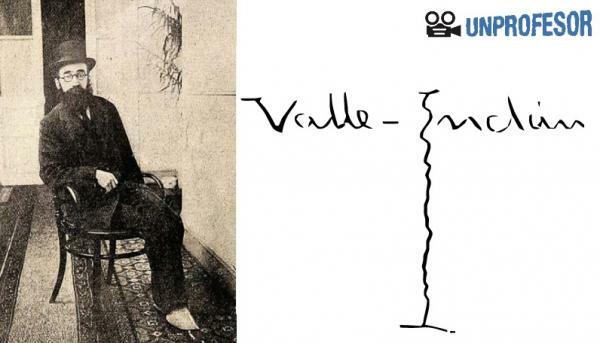
Ramon Valle Peña is the real name that hides under the literary figure of Inclán Valley, an author who adhered to the trend of Modernism but, quickly, began to build his own voice and emerged as one of the most original and influential personalities of the time. Born in Galicia, Valle is known around the world for his great aesthetic contribution with the creation of the grotesque, a distorted vision of reality that offers a result that moves between tragedy and comedy. Among the most important works of Valle Inclán we highlight, in narrative, the Sonatas (which include four different books) and, in theater, "Luces de bohemia", a work that presented for the first time the absurdity of Valley.
In this lesson from a TEACHER we are going to offer you a brief biography of Valle Inclán so that you know the personal and literary trajectory of the author and, thus, you better know his great contribution to Hispanic letters.
Index
- Short Biography of Valle Inclán: His Early Years
- The conquest of the success of Valle Inclán
- The works of Valle Inclán: novels
- Valle Inclán Theater: the grotesque
Short Biography of Valle Inclán: His Early Years.
We begin to analyze the brief biography of Valle Inclán to place ourselves in the year 1866 in the town of Vilanova de Arousa, Pontevedra, where Ramón Valle y Peña was born or, as we all know him, Ramón del Valle Inclán. He was born into a family of the nobility although, at that time, they did not enjoy a good economic situation.
Valle began his law career on the recommendation of his father but, upon his death, he decided to abandon his studies and went to Mexico. We are in 1892 and it is in this Latin American country where he begins his career in the world of letters, beginning as a journalist in the local press. This is when the author will begin to sign his articles under his pseudonym Valle Inclán.
He spent time in Cuba and then returned to Spain. It was in Madrid where he began to rub shoulders with the personalities of Modernism, a literary trend to which he adhered due to his avant-garde ideas and his peculiar personality. It is at this time when the author begins to show himself with his peculiar clothes and his bizarre accessories; he began to be a very active member of the Madrid literary gatherings and in 1895 he published "Femeninas", his first book.
During these years when fully affiliated with ModernismValle Inclán was related to personalities such as Pío Baroja. Azorín or Jacinto Benavente with those who frequented coffee shops in the capital that, now, have become a symbol of Modernism: Café del Príncipe, the terrace of Café Gijón or El Gato Black.
His success was quite prudent until in 1902 he publishes "Autumn Sonata", work that is part of the saga based on the biography of the Marqués de Bradomín. Five years later he will marry the actress Josefina Blanco with whom he will travel through Latin America while accompanying him on an international tour. In these years, Valle Inclán joined the Carlist ideology that opposed the new industrial society.

Image: The World
The conquest of the success of Valle Inclán.
We continue with this brief biography of Valle Inclán to place ourselves at the peak of his literary career. The author, who was a constant participant in social gatherings and literary debates, he begins to be an important personality among the Spanish cultural sector and, even more so, after the success of his Autumn Sonata with which he achieved unanimous recognition.
Thanks to this, a chair of aesthetics was created at the School of Fine Arts designed to be him the teacher in charge of teaching it but, nevertheless, rejected it because he did not want to adapt to the academicism. This was also the reason why he resigned his candidacy to enter the Academy.
In 1920 Valle Inclán reached the top of his career with the publication of "Luces de bohemia", the representative work of the grotesque, aesthetic created by the author and characterized by offering a distorted vision of reality, as if it were reflected in a concave mirror. For Valle, this was the only possible perspective that he could take if he wanted to talk about the reality of Spain, a country full of corruption, of characters diverse and whose history could not be treated as a tragedy or as a comedy and, therefore, he joined the tragicomedy to be able to reflect the reality of the country.
Thus, during the 1920s, Valle Inclán became a recognized and essential writer of letters. Spanish women who, in addition, had created the grotesque, a new way of making literature and getting closer to reality Spanish.
On an ideological level, it was in these years that Valle approached anarchism and, therefore, when in 1931 the Second Spanish Republic, he supported her with fervor and, in fact, he was appointed by Manuel Azaña to act as General Curator of the Artistic Heritage. In 1932 he stopped working as a curator to take charge of the management of the Ateneo de Madrid; years later, he went to Rome to be the director of his School of Fine Arts.
In 1936, Valle Inclán returned to Galicia suffering from an illness. On January 5, he died in Santiago de Compostela. .
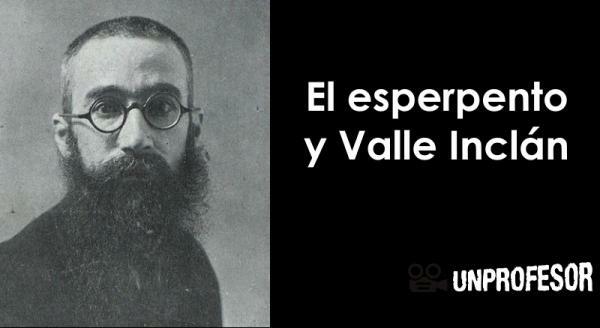
The works of Valle Inclán: novels.
Now that we have been able to know the summarized biography of Valle Inclán, below we are going to focus on his literary work to better understand the creative process of this great author. He was very active at the time of writing and, therefore, if we visualize his biography we will find that the writer cultivated many genres although, yes, he always opted for a creative freedom rejecting the most traditional conceptions about theater and narrative.
At the aesthetic level, Valle was a revolutionary and did not focus solely on a current but was influenced by the symbolism and decadentism. This caused him to be enrolled within the Modernist current, a group of intellectuals who sought to regenerate the country by allowing ideas and movements from other European countries to enter. Such was the genius of Valle that he created the literary genre of the absurdity.
It was from 1902 to 1905 that he wrote and published his "Sonatas", the first of his narrative works that achieved unanimous success among critics of the time; The 4 works that are part of this saga are considered the greatest contribution to Modernism that was made in Spain. These focus on the biography of the Marqués de Bradomín, a character inspired by Don Juan but who, on this occasion, is ugly, sentimental and Catholic.
The carlist influence in Valle we can see it in his three novels that are inspired by the Calista wars: "The crusaders of the cause" (1908), "The shining of the bonfire" (1909) and "Gerifaltes de antaño" (1909). Here he focuses on the feelings of the collective and the individual, leaving a bit of the modernist aesthetic to eliminate adornments and aesthetic effects.
Of the most surprising and groundbreaking novels of him we highlight "Tyrant Banderas" (1926) and, in fact, it is considered as the first approach to the aesthetics of the grotesque that he will finish defining in "Luces de bohemia". In this novel we find a story that tells us about a Spanish-American dictator.
"The Iberian ring" It was intended to be a series of novels that wanted to reflect the history of Spain since Isabel II fell from the throne and until the arrival of Alfonso XII. Of his main objective, Valle Inclán could only publish two novels:
- The Court of Miracles (1927)
- Long Live My Owner (1928)
The third work, "Baza de espadas", was left half due to the death of the author.
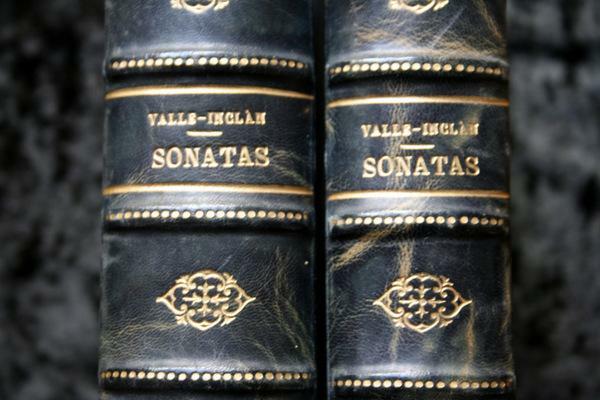
Image: Todocolección
Valle Inclán Theater: the grotesque.
We continue with this review of the biography of Valle Inclán to talk to you, now, about his contribution to the theater genre. The works signed by this author were very original and, in fact, broke with the traditional conventions of the genre, thus betting on much more revolutionary, critical and sarcastic pieces.
His theatrical career began in 1899 with the publication of "Ashes" and continued years later, in 1906, with "El marqués de Bradomín" in a piece that adapted the life related in his Sonatas. These two works can still be included within the more academic Modernism although, yes, in them one could already begin to see the disparate and original personality of the writer.
Valle Inclán's first great theatrical work was the trilogy "Las comedias barbaras" which includes three works: Águila de Blasón (1907), Romance de lobos (1908) and Cara de plata (1922). Here we see how Valle distances himself from Modernism when he returns to his rural Galicia but endows it with magical connotations and full of symbols.
But the essential characteristic of the Valle Inclán theater was, without a doubt, the creation of the grotesque, a new aesthetic that was defined and reflected in "Bohemian Lights "(1920). In this work, the author explained to us the creation of this perspective, which was the only way in which he could find the authentic Spanish essence, which moved between tragedy and comedy. The grotesque vision appears when we look at an object through a concave mirror and, therefore, the resulting image is distorted and warped. In this other lesson from a TEACHER we offer you a summary by scenes of Bohemian Lights.
Valle Inclán's absurdities continued in three more works: Los Cuernos de Don Friolera (1921), The galas of the deceased (1926) and The captain's daughter (1927), all of them included in the volume from "Tuesday of Carnival". In this other lesson from a PROFESSOR we will tell you in detail all about the grotesque in Valle Inclán so you can better understand what was his great contribution to literature.
If you want to read more articles similar to Valle Inclán: short biography, we recommend that you enter our category of History of Literature.

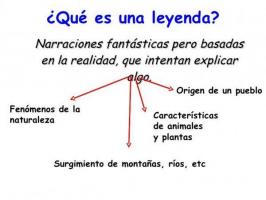
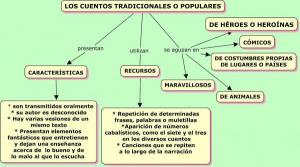
![What are LITERARY TOPICS [with more than 20 EXAMPLES]](/f/4d621ac3fe353508efd0f1fb9b9bb1e2.jpg?width=300&height=200)